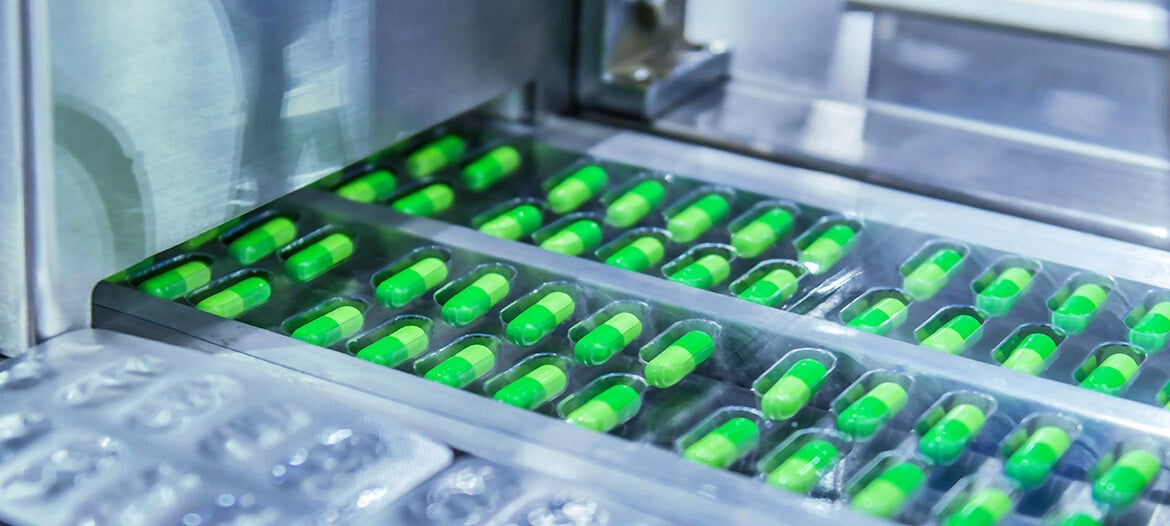Understanding the ATMP Revolution in Life Sciences
Advanced therapy medicinal products (ATMPs) are driving the life sciences industry in a new direction. Manufacturing, distribution and dispensing of these new therapies is calling for new approaches.
It is a truism that the field of cellular and genetic technologies (CGTs)—aka advanced therapy medicinal products (ATMPs)—is bigger today than they were two or five years ago. It is also a truism that they are going to get much, much bigger, since there are hundreds of late-stage clinical trials going on right now, and the number of approved treatments is expected to rise and rise again over the next few years. We are entering a new era of medical technology to treat a wave of formerly untreatable conditions.
The numbers are staggering. The Alliance for Regenerative Medicine, one of the leading trade associations in the field, counted $23.1 billion of investments in the field in 2021—up 16% over the year before. Over 1,000 companies are engaged globally, and that doesn’t count the thousands of academic researchers investigating new cell lines, new genetic manipulations and the like. Over 2,200 clinical trials are being conducted, and of those 216 are in Phase III. FDA expects 10 to 20 newly approved therapies per year for the next several years, representing perhaps a third of the approvals of any type of new molecular entities.
Behind these eye-popping numbers is a nearly frantic race to keep up with the new science and new discoveries. Arguably, the race started when the Human Genome Project was completed around the year 2000. In more recent years, technologies like CAR-T (chimeric antigen receptor-T cell) and CRISPER (Clustered Regularly Interspaced Short Palindromic Repeats) have opened up new avenues for how to identify, modify and apply the therapies.
Putting all the molecular genetics and cellular mechanics to the side, there are two important concepts to keep in mind when thinking about how these wonder therapies will reach patients: first, for the most part they involve living cells (sometimes, viruses); second, this living matter needs precise temperature control (often in cryogenic ranges) to remain viable and potent. A new infrastructure to monitor and record those storage and shipping conditions is being created as you read these words.
Some Definitions
It’s worthwhile to take a moment to understand what these new therapies are, and what challenges they represent to industry and healthcare. In the US in the 1990s, the concept of “regenerative medicine”—repairing or growing body organs with living tissue became a topic of intense clinical development. Along the way, the isolation (in 1998) of embryonic stem cells opened up a much broader world of using human cells in therapeutic applications. That, plus other discoveries, led to today’s classification of CGTs. (The Alliance for Regenerative Medicine, while covering the CGT space extensively, also includes “tissue engineering,” which harkens back to the “regenerative” sense of this science.)
In Europe and elsewhere, the concept of ATMPs was arrived at as a way to encompass CGTs and regenerative medicine and, frankly, whatever other new stuff comes up. Meanwhile, within the US Food and Drug Administration, the RMAT (Regenerative Medicine Advanced Therapy) designation came into being under the 2016 21st Century Cures Act. All these designations are important because regulatory and review processes have been set up, in the US and elsewhere, specifically for these therapies. Some of the regulations allow for an accelerated review and approval process (not available to non-RMAT or -ATMP products); all of them call for extensive tests of purity and potency of not only the final product, but also the source materials like cells and viruses.
Industry standards are the operational aspect of a regulation—there is a combination of mandatory and voluntary standards being developed, and regulators are scrambling to keep up with their ability to oversee these developments. In 2017, FDA assigned a group, the Standards Coordinating Body for Regenerative Medicine (SCB for short) to draw together literally dozens of other standards-setters to establish common practices.
“This standards-setting process is ongoing; there’s almost a hopscotch occurring between a new type of research appearing, and a new standard practice being proposed as clinical development occurs.”
Within the past year, the Alliance for Regenerative Medicine issued Project A-Gene, a “multi-stakeholder collaboration to incorporate Quality by Design (QbD) principles into a manufacturing case study of a viral vector commonly used in gene therapies.” The effort follows previous similar projects, A-Mab and A-Vax, to establish common practices for quality in (respectively) monoclonal antibody and vaccine production. “Each of those technologies faced similar hurdles when developers sought to advance from small-batch manufacturing for clinical trials to full-scale commercial production,” says the Alliance.
More specific to supply chain issues in ATMPs, the International Standards Organization issued ISO 21973:2020, Biotechnology—General Requirements for Transportation of Cells for Therapeutic Use. “Issues related to cell transportation … include monitoring and controlling transportation conditions, managing traceability and maintaining chain of custody, and establishing clear expectations and communications between cell product manufacturer and transportation service provider.” (The actual text is available for purchase from iso.org.)
Cryoport, a leading provider of supply chain solutions for life sciences, calls ISO 21973 “a leap forward” for the industry, noting that “In a global environment, the specification and diligence in the packaging and transportation of these therapies varies significantly, resulting in considerable risk and potential loss of irreplaceable therapies.”
Vein to Vein
While there are almost as many distinct processes to delivering an ATMP therapy as there are therapies themselves, perhaps the most illustrative example of ATMP challenges is with autologous cellular therapies—about a dozen of which are now commercial. In these cases, the process starts with an extraction of the patient’s own cells (typically, T-cells) by apheresis, then routing the cells to a lab/manufacturing facility where the cells are treated or manipulated genetically and “expanded” (grown). Then the cells—usually stored under cryogenic conditions—are sent back to the facility where the patient is, to be infused. Thus, so-called “vein-to-vein” therapy. Careful monitoring of the infusion step is necessary because this step can be life-threatening to the patient. The manufacturing step can take several weeks, but the cells have a limited shelf life, so the entire process is tracked and closely monitored (a non-trivial part of this monitoring is to ensure that the right cells go to the right patient).
A great example of how this process implementation is occurring in the UK, where the Cell and Gene Catapult program has been set up to encourage collaboration between the UK government, the UK healthcare system, and a collection of manufacturers, vendors and service providers. The goal is ambitious: to make the UK a premier location for the development and production of ATMPs. To this end, Catapult has several facilities of its own; attracts investment and commercial development from private industry, coordinates research and skills training at a variety of educational institutions, and provides policy guidance on ATMPs commercialization. When an academic researcher can work on an ATMP with an industry sponsor, then conduct trials at the Catapult-coordinated healthcare facility, and then hire trained workers coming out of Catapult-coordinated programs, the whole process accelerates.
Several years ago, Thermo Fisher Scientific co-located its UK CryoHub, a facility for managing storage, distribution and logistics for clinical trials, with a Catapult facility. “Delivering successful industry-led trials in this innovative area of research is dependent on creating a robust and reliable supply chain of their most vital ingredients, the cells themselves,” commented then-CEO of Cell and Gene Catapult, Keith Thompson.
In the US, such incubation-type activities tend to be organized by state economic development authorities; some of it is also the happenstance of where leading research centers are located. San Francisco, Boston and Philadelphia represent some of this effort, with pioneering CGT companies attracting yet more follow-on players.
One-stop Shopping
In the early days of ATMP development, projects started with an academic researcher and his or her laboratory, with a nearby hospital where qualified patients could be tested. Now, with higher-volume commercial activity, ATMP logistics involves multiple sites and careful coordination by service providers conveying the precious cellular materials to and from the hospitals that provide the therapy. (There is the possibility of developing “point of care” cellular manipulation at the research hospitals themselves, but that attempt appears to be fading.)
More recently, there is a scramble by the various service providers to life sciences—contract research organizations, contract manufacturers, logistics service providers, and specialized packaging companies—to become as much of a one-stop shop as they can. Contract-research providers like Thermo Fisher Scientific, Catalent and PCI Pharma Services have built out or acquired complementary services. Thermo Fisher, for example, paid $7.2 billion to acquire Patheon in 2017, a leading contract manufacturer. More recently, Cryoport, which started years ago making specialized dewars for ultracold shipping, acquired a dewar manufacturer and several clinical supply chain firms. BioLife Solutions, which started by providing cryopreservation solutions, has acquired a container supplier and a manufacturer of ultracold freezers. This consolidation is bound to continue.
On the data collection and recording front, numerous vendors of temperature-controlled packaging solutions now incorporate data loggers and sensors into their containers. Envirotainer and CSafe, providers of powered airfreight containers, have done this for some time, and link these data logging resources to a portal for near real-time client access. Numerous providers of passive (non-powered) containers provide similar services. ELPRO, provider of comprehensive monitoring solutions, data loggers, analytics software, and sensors in life sciences applications, combines its in-transit capabilities with those for monitoring labs or storage facilities, offering the potential to track a shipment from point of manufacture to destination, and all intermediate stops. With its recent acquisition by Bosch Service Solutions–a major industrial service provider–there is planning to incorporate Bosch’s 24/7 monitoring service (e.g. used by a number of major automakers and manufacturers of elevators for their customer support) with the ELPRO network.
Parallel development is occurring in the IT space. Many service providers offer software systems to track shipments and record environmental conditions of those shipments (here, it’s worth noting that not just temperature, but also humidity, pressure and shock are data points of value during shipping and storage). Two companies—TrakCel and Vineti—have grown in the past several years as software providers of “orchestration” services, collecting data on patients (and all the testing that goes on for their diagnosis), the apheresis or similar cell extractions, the manufacturing steps, and the patient delivery. As industry standards like ISO 21973 make painfully clear, comprehensive data collection and documentation are the foundation for progress in the ATMP field.
Author

Nicholas Basta
Founder of Pharmaceutical Commerce
He is a life science and business journalist and consultant, founder and former editor in chief of the print and online magazine Pharmaceutical Commerce.







Leave a Comment